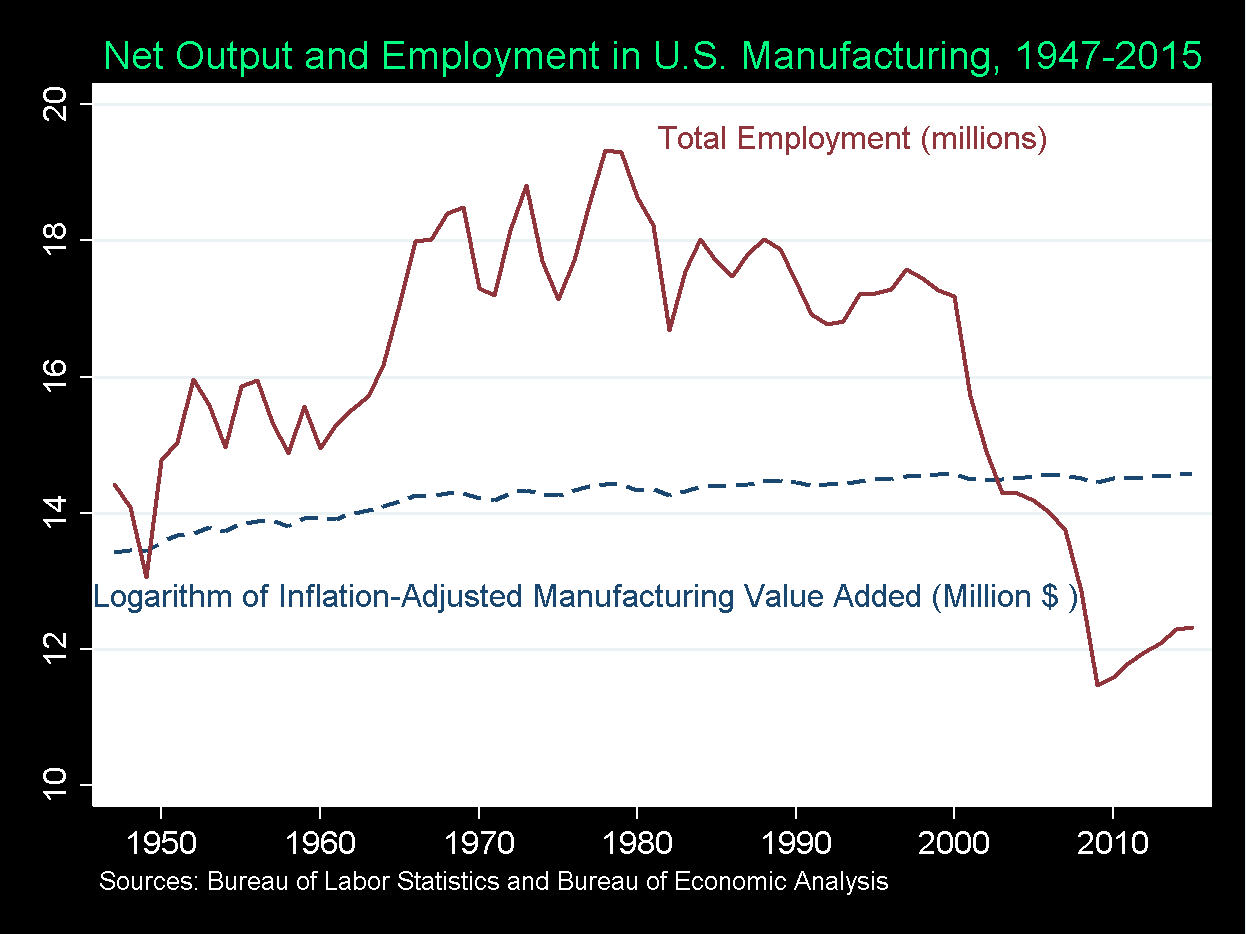Will Manufacturing Jobs Come Back?
Harvard Kennedy School and Harvard Graduate School of Education

The Issue:
President Trump has made bringing back manufacturing jobs a central part of his campaign. He is focused on convincing companies to stay in the U.S. through a mix of carrots (tax breaks) and sticks (threatening import tariffs on companies that ship jobs overseas).
The claim that the President can bring back manufacturing jobs ignores an important reality – as an industry, U.S. manufacturing is booming.
The Facts:
- There is no denying that the U.S. has been losing manufacturing jobs. The losses were particularly dramatic during 2000s, when over 5 million manufacturing jobs disappeared (see chart) feeding some of the discontent that helped bring Trump to power. However, the decline in manufacturing employment began more than 30 years ago and has occurred worldwide.
- But, the claim that the President can bring back manufacturing jobs ignores an important reality – as an industry, U.S. manufacturing is booming. Manufacturing production in the United States is at an all time high, rising even as manufacturing workers received their pink slips (see dotted line on the chart which tracks manufacturing value-added – which is manufacturing production net of the inputs used by manufacturers). Worldwide, the U.S. trails only China in manufacturing value-added.
- Punishing employers for offshoring and moving manufacturing jobs won’t work, because these jobs are not being taken by workers in other countries: They are being taken by robots. Thanks to automation, it takes increasingly fewer workers to make the products. In fact, U.S. manufacturing employment has risen slightly since the Great Recession. This “reshoring” has occurred in part because labor costs are such a small share of production that it becomes more profitable to reduce shipping costs by locating closer to U.S. consumers.
- Manufacturing jobs, which came with relatively high pay and benefits, are difficult to replace. In the short term, infrastructure spending can boost employment for blue-collar workers that have been displaced. But growing automation places limits to job creation in this area as well. Tax credits and privatization of infrastructure projects will probably not bring back as many jobs because private companies are likely to rely on machines more than on labor. Employment could also be increased through public sector “make work” programs, although these programs are generally inefficient and do little to address long-term structural issues.
- Automation is happening in all sectors of the economy, but much more in manufacturing than in services. Hence, for the longer-term there is an urgent need to reorient job training around high-skilled service work that pays middle class wages. For instance, there is rapidly growing demand in health care professions such as nursing, health technicians and paraprofessionals. According to the Bureau of Labor Statistics, 13 of the 20 fastest growing occupations are in allied health and more than half of these occupations paid wages that were at or above median household income (around $55,000 in 2015).
What this Means:
Automation is a long-run problem that demands a long-run solution. Convincing manufacturing companies to keep — or bring back — jobs, one company at a time, is not going to restore the millions of jobs that have been lost to technological change. We must reorient educational institutions and job training around “human” skills that are difficult to automate. These skills include creativity, complex problem-solving, and the ability to work with others in fluid, team-based settings.
Like what you’re reading? Subscribe to EconoFact Premium for exclusive additional content, and invitations to Q&A’s with leading economists.
